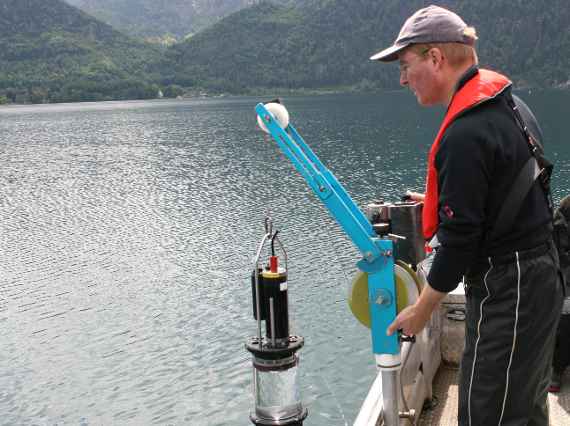With the entry into force of the Water Quality Monitoring Ordinance (in German: Gewässerzustandsüberwachungsverordnung, abbreviated in GZÜV) in 2006 and its amendment in 2010, the recording of water quality and the requirements for analysis were newly regulated and adapted accordingly by us. Since then, only the large Upper Austrian lakes (lake Mondsee, lake Irrsee, lake Attersee, lake Traunsee and lake Hallstätter See) have been analyzed by the Institute on behalf of the Upper Austrian government. Since then, the institute laboratory has been subject to regular quality assurance in accordance with EN ISO/IEC 17025.
Sampling takes place four times a year, in spring during mixing of the water layers, in early summer at the beginning of the stratification phase, in summer and in autumn at the end of the stratification. Some years ago, the sampling interval at lake Mondsee was modified to monthly, because of its moderate classification based on the phytoplankton assessment. Depending on the depth of a lake and sampling time, between 5 and 19 depth levels are sampled. From the individual water samples, 14 parameters (water temperature, electrical conductivity, pH, acid binding capacity, oxygen content, oxygen saturation, ammonium, nitrate, total phosphorus, filtered phosphorus, insoluble phosphorus, orthophosphate, chloride, nitrite, chlorophyll-a) are analyzed. This results in a total number of about 7,200 individual analyses per year. The results are checked for plausibility by us, converted into predefined interface files, transmitted to the Office of the Upper Austrian Provincial Government and from there imported into the H2O database.

